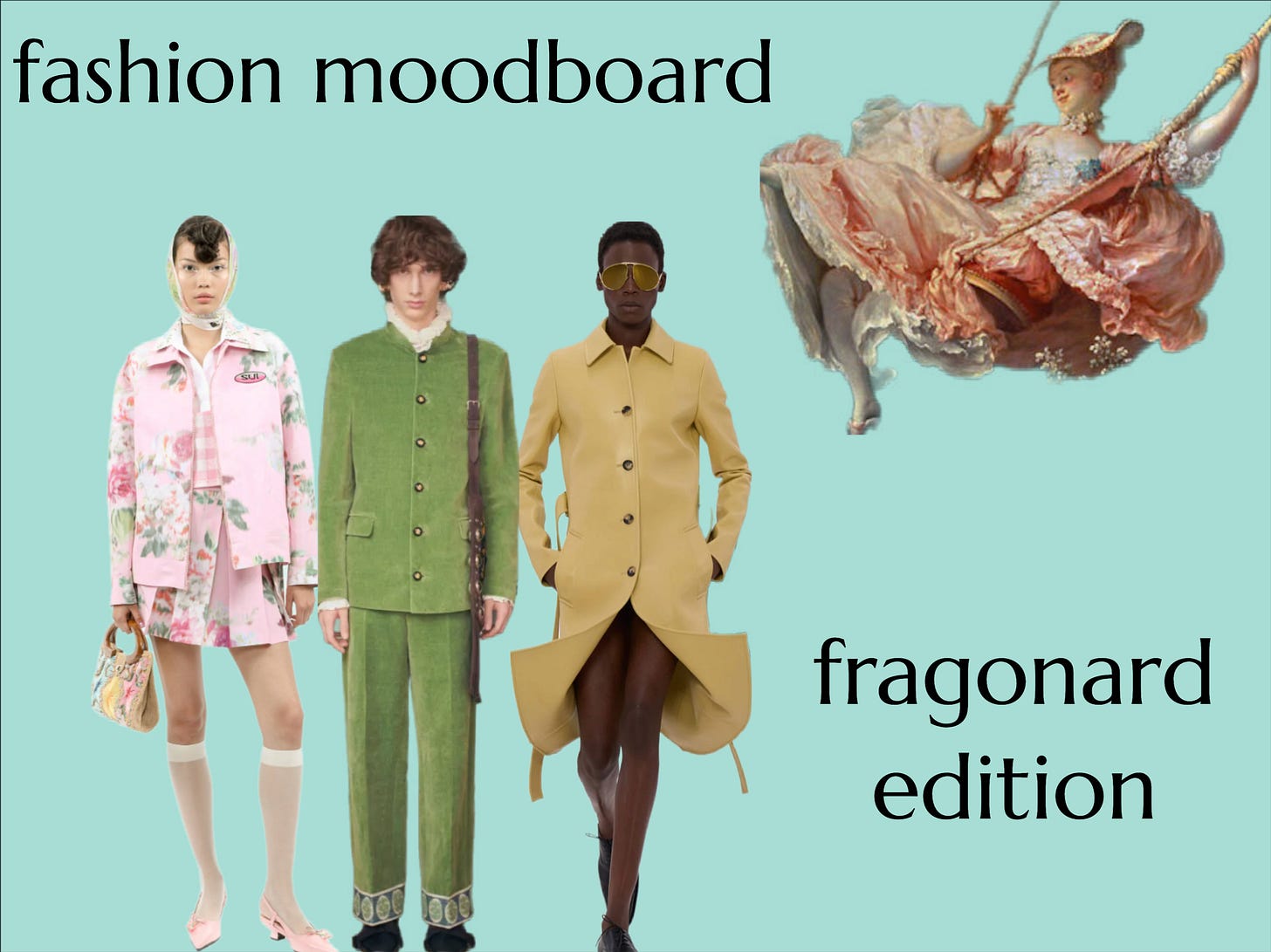Fashion Moodboard: O-Rococo Flow
We can sail (we can sail) with some pastel looks inspired by Fragonard’s works
Previously covered fashion eras:
One of my favorite things to do when I travel abroad is to visit art museums. Some details stay with me — Michelangelo’s whispery gauze, Sargent’s cardinal red, Amy Sherald’s primary colors. So I thought I’d make a whole post about outfits inspired by museum works :)
I’m going to focus on the works of Jean-Honoré Fragonard, but first let’s dive into his time period — the Rococo era.
History and Modern Resurgence
The Rococo period in France spanned most of the 18th century. French society went through upheaval when the young king Louis XV ascended the throne in 1715, and the culture loosened up its morals to focus on pleasurable pursuits. In art history, it is the final expression of the Baroque period, where somber religious themes made way for a more light-hearted (but still ornate) decorative movement. Rococo art favored pastel hues and bucolic scenes full of romantic courtship and implicit eroticism.
While there is renewed interest in the Rococo era because of modern political dissatisfaction and rising inequality (Marie Antoinette’s name is synonymous with the era’s decadence), some modern artists see it as a way to reclaim femininity. As Katie White writes in Artnet:
“Interestingly, however, some contemporary artists see the language of the Rococo as a way of accessing a new audience—of women and feminine-identifying people—rather than as a delight for the ultra-wealthy as the Rococo had originally been. In their hands, the indulgent beauty of the Rococo becomes an unabashed celebration of the feminine, where the senses, rather than intellect, are prized.”

Below are some paintings from one of the Rococo era’s stars, Jean-Honoré Fragonard. Known for pastels, depth perspective, and bucolic eroticism, I thought Fragonard’s work would be great for sartorial inspiration. Though these outfit examples are from recent runway offerings, I think you could concoct from your own closet or through secondhand means.
The Swing (1767)
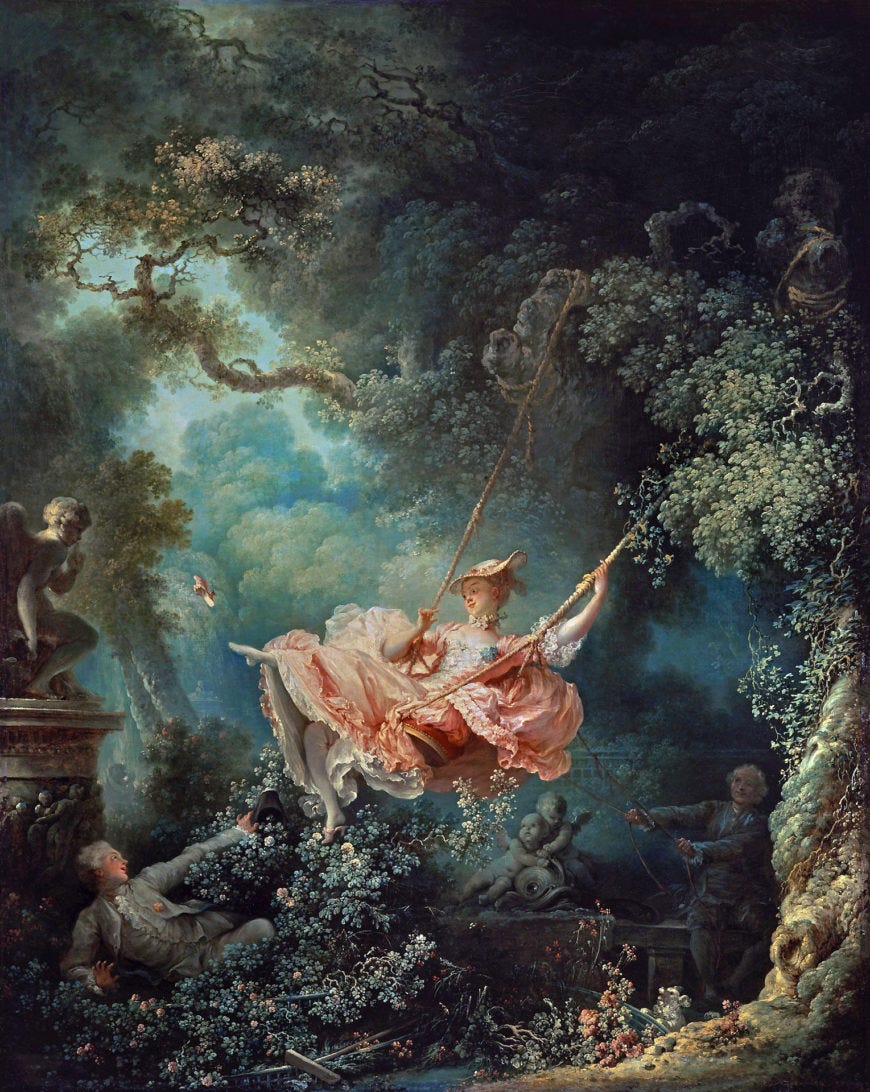
There’s a lot to take in here, as the multi-layered scene feels very lush. What I love most is the overgrown setting, the dreamy color-scape, and the sweeping action of the moment. (Fun fact: The animated 1991 Beauty and the Beast movie, which is set in the Baroque period, owes much of its aesthetic to this painting.)
It’s also a highly erotic scene. The guy who commissioned it, Charles Collé, wanted a painting of himself and his mistress.1 Her swing position and his extended hand evoke sexual permissiveness and arousal. I love the small details: the kitten heel flying toward the Cupid statue’s head, an older man manning the swing’s ropes, the putti children watching her fly by. Everyone looks like they’re having fun.
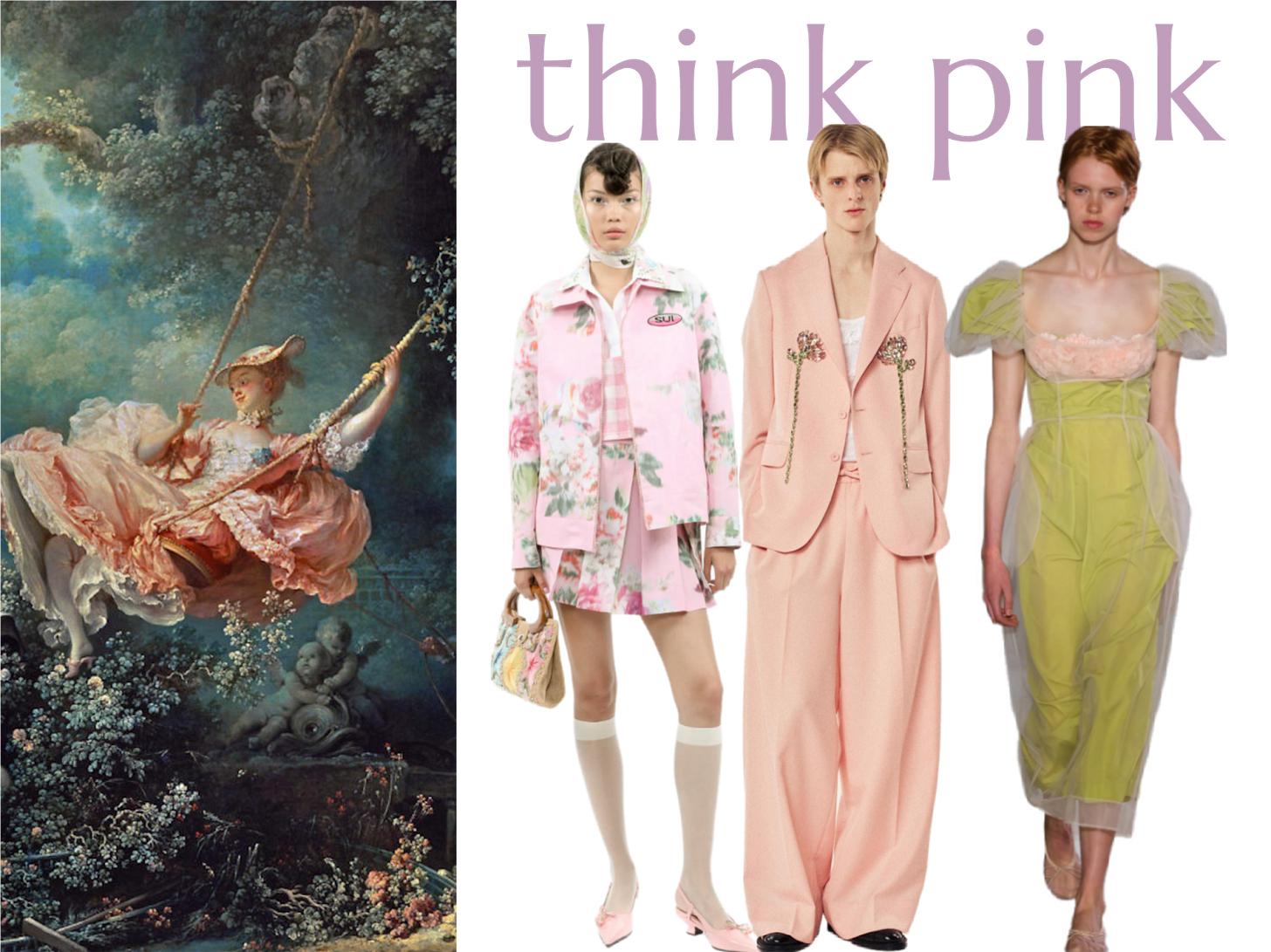
For swinging life away: I’m a sucker for matching sets so Anna Sui’s pink combo is adorable (and the entire SS25 collection is up my alley). The Simone Rocha pink suit is a good color match, and the jacket’s flower positioning looks erotic (like nipple tassels) and that felt appropriate for the painting’s vibes. Same with the green dress’s translucent layers and floral bandeau.
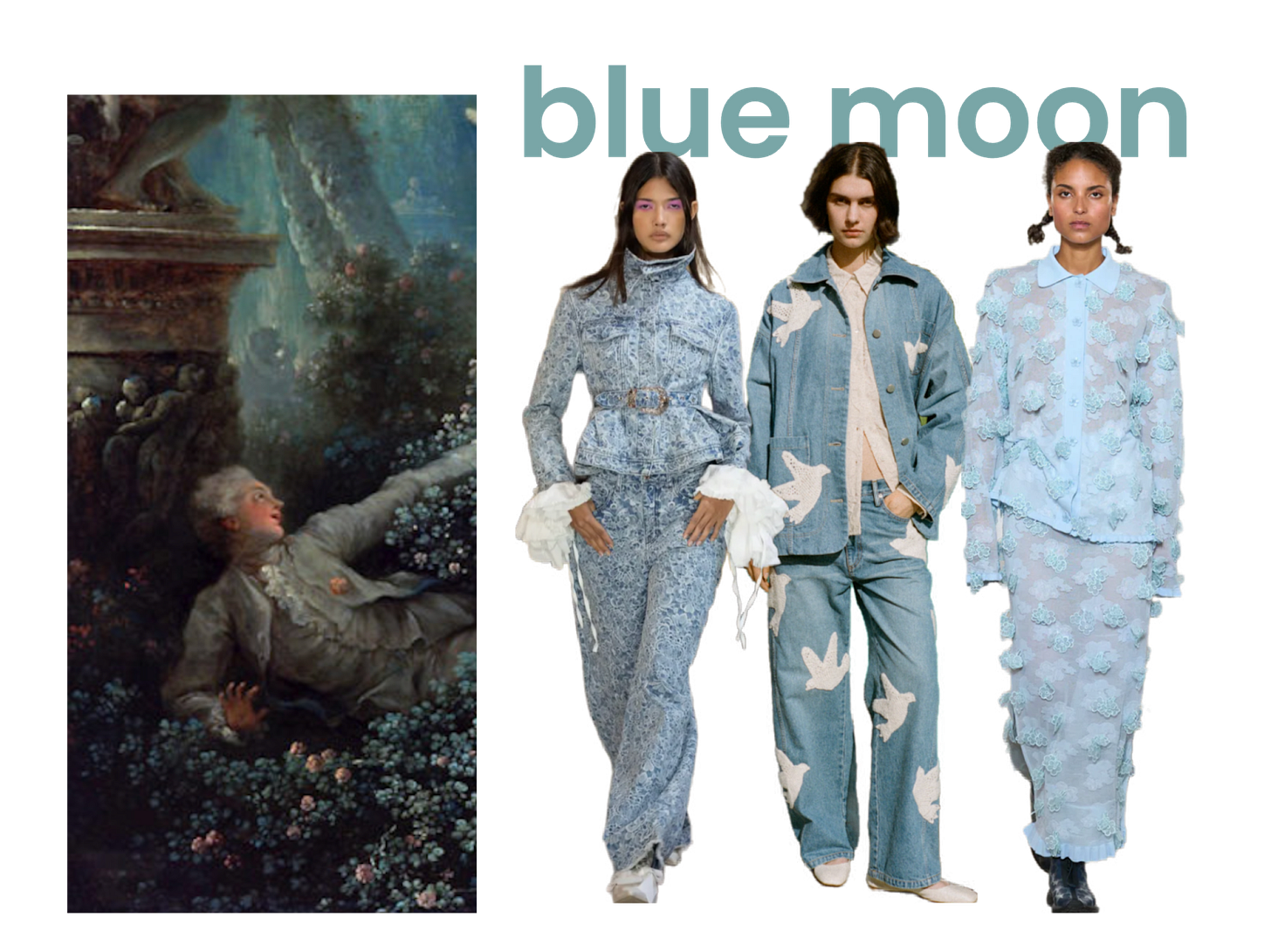
For a lively tousle in the foliage: I love the ruffles in the Almeida outfit’s cuffs. The Sea set’s embroidered birds felt evocative of the flying shoe, while Cecilie Bahnsen’s ruffled poufs fit in with the overall relaxed aesthetic.
Young Girl Reading (1769)
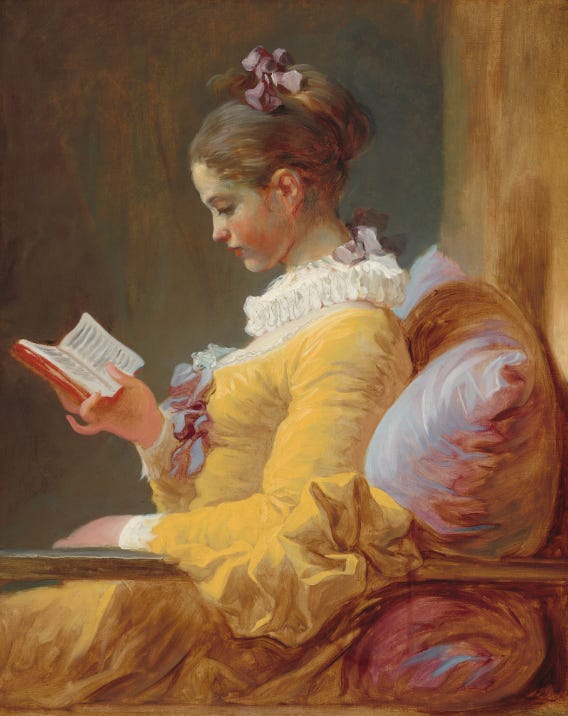
While the model for this painting remains lost to history and may even be based on a fantasy archetype, the painting is unusual as the subject is not looking at the audience.2 What I love about this painting is the quiet contemplation – the young woman’s attention centered not on the painter, but on the page and presumably her own interests.3 In a world of thinking too much about what the attention economy is stealing from us, this painting feels like a pushback to all that. Also she’s seated against what looks like a comfortable pillow!
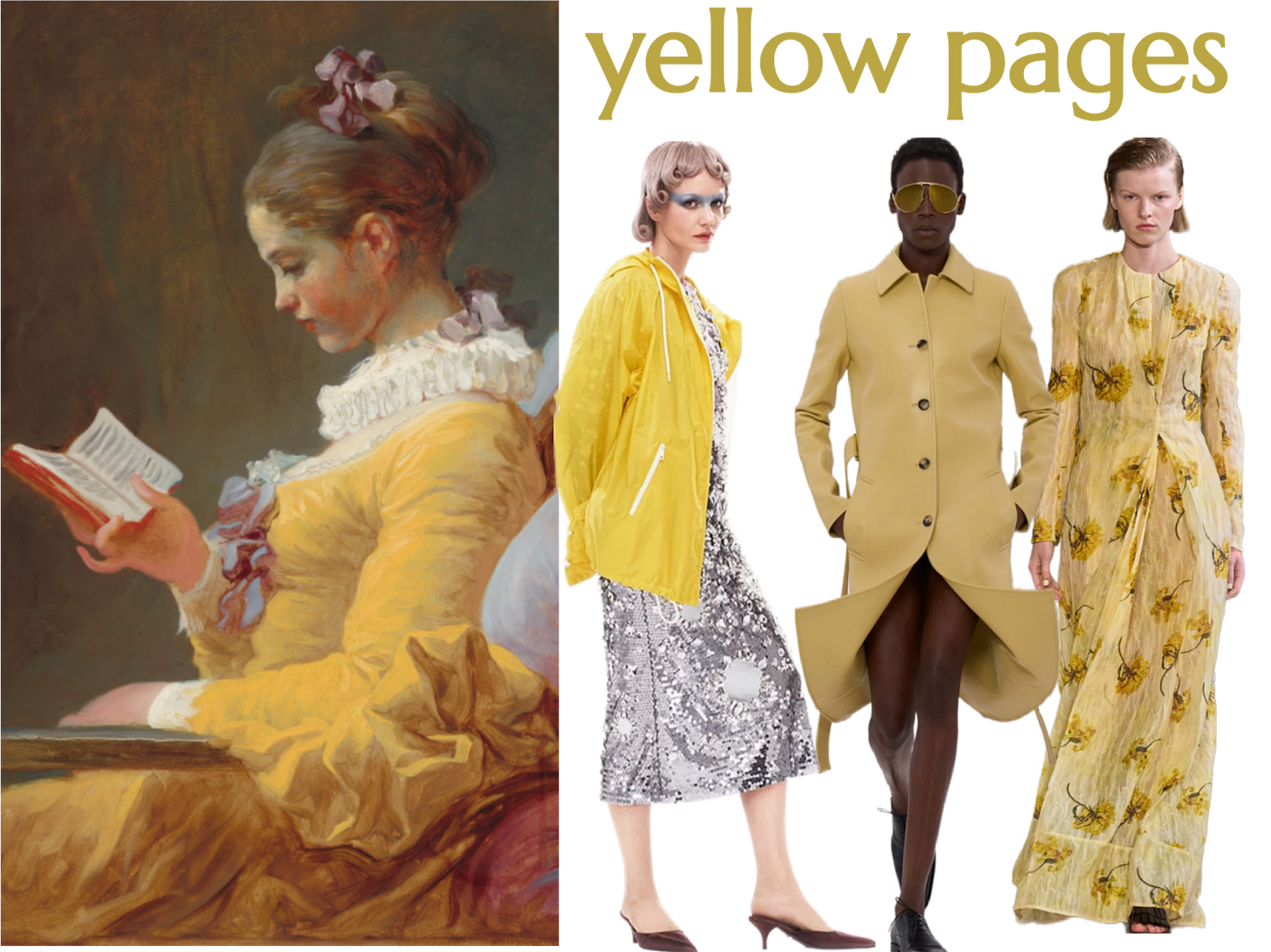
For buttery bibliophiles: These outfits align with the color and sleeves of the reader (I tried my hardest to find some with a ruffled collar, but alas). Butter yellow has been coming back for a while now,4 so it’s nice to see options beyond the ever-present mustard. I wanted to point out that like Fragonard’s painting, the first look has some literary chops: author Ottessa Moshfegh wrote 10 short stories for Carey Mulligan’s Prada campaign, and each look was inspired by them.
The Stolen Kiss
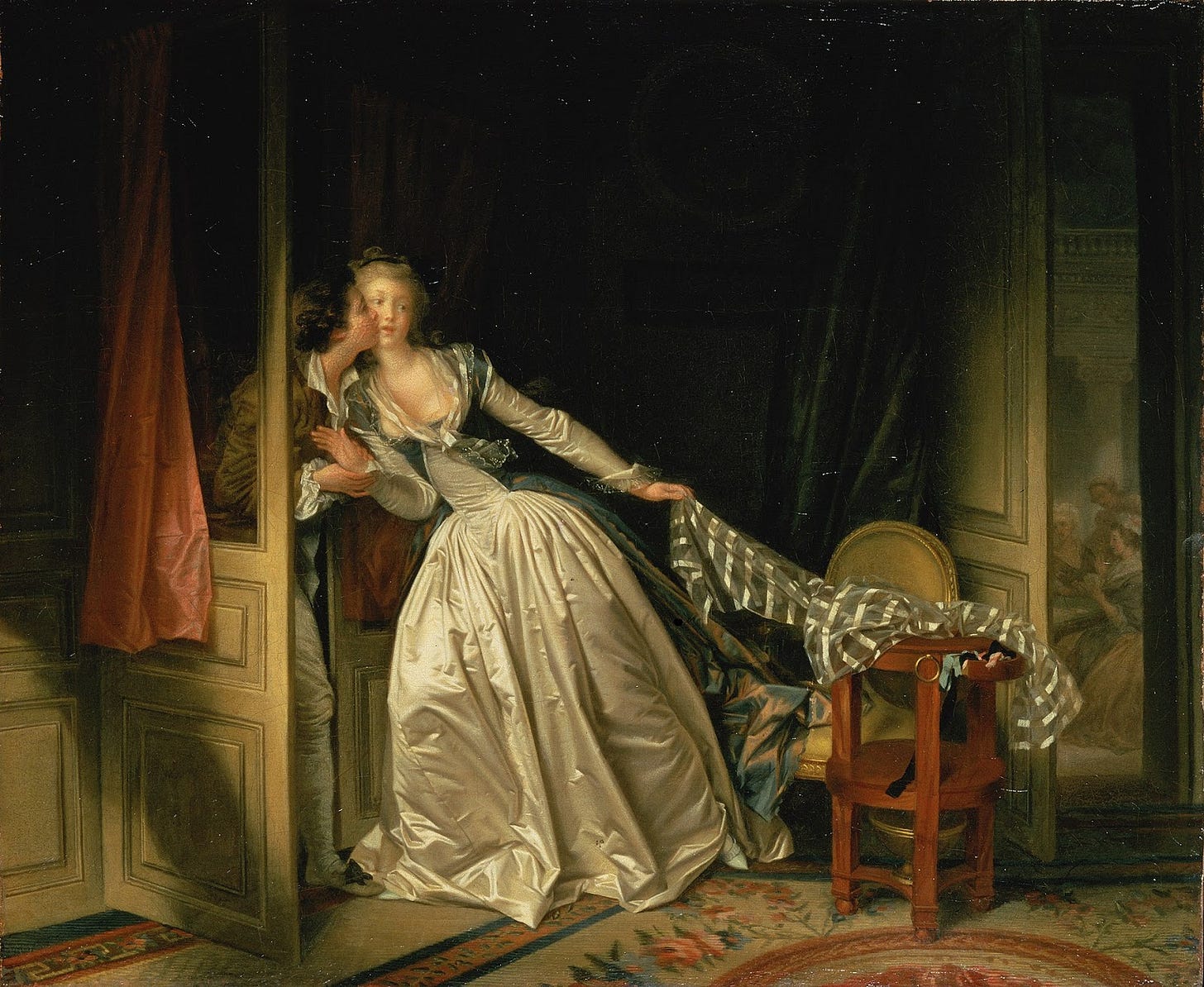
The painting depicts a couple in a secret romance, in a lavish room covered in silks and other textiles. This particular painting reminds me of the composition of John William Waterhouse’s “The Listener” (1909) — which depicts the mythic Thisbe listening for her secret lover. Fragonard’s work is like a consummation of that universal longing.
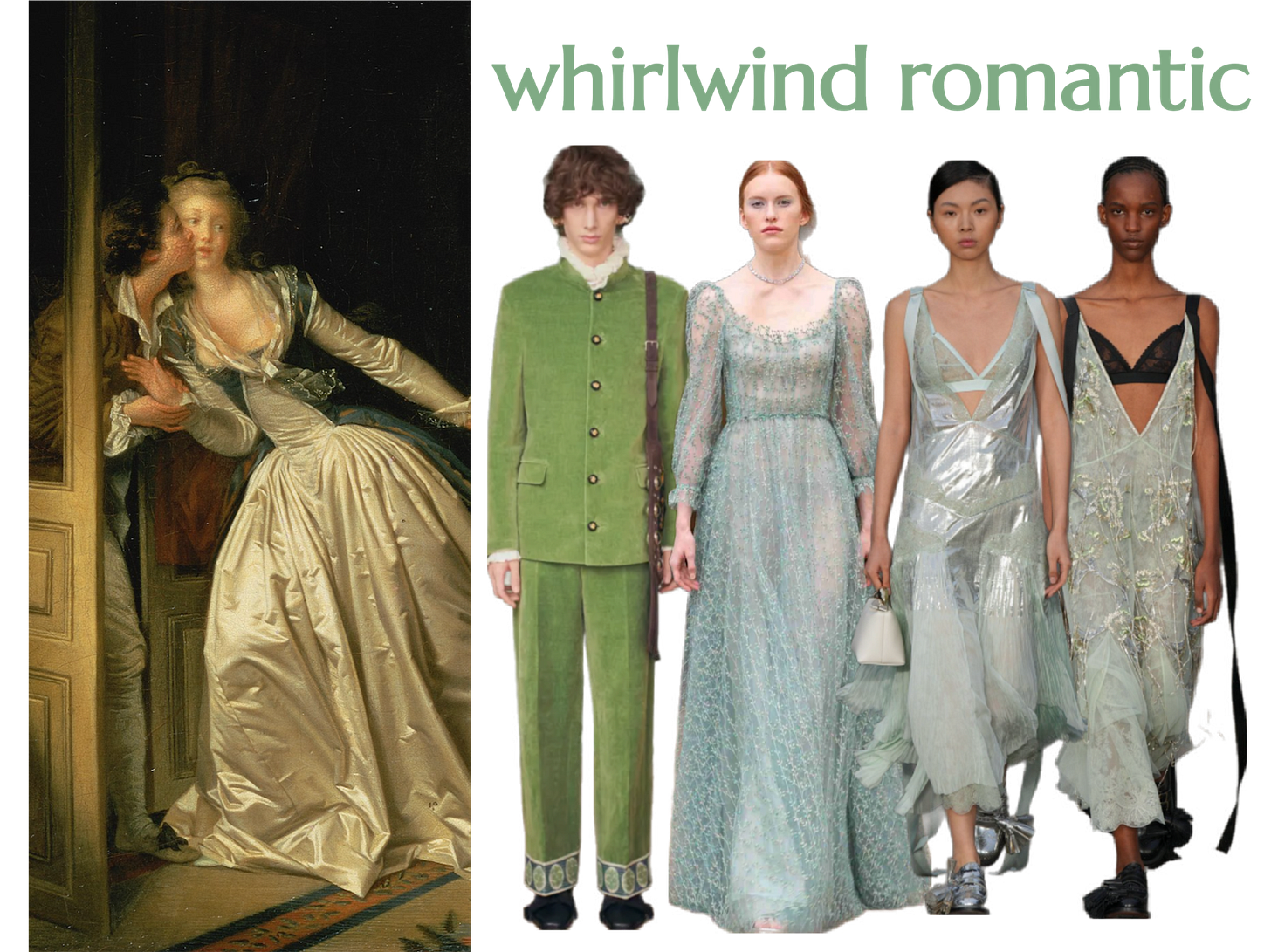
For stolen kisses, pretty lies: Since this painting is all about sensuality and different fabrics, I thought I’d vary the textures and transparency. We’ve got Valentino with the green suit and ruffle collar to match the male kisser. Luisa Beccaria has romance down with a sweeping, semi-transparent gown. Finally, Erdem with slinky nightwear, to evoke temptation, decadence, and a state of undress.
Finally — this post is already so long, but I thought about interior design too. See my Pinterest board for some Fragonard-inspired rooms (and more fashion)!
I think I might make this a whole series at some point, as I have some thoughts about Jan Van Eyck and Hieronymous Bosch, so to be continued!
Have any works of art inspired you in your own fashion or interior design?
Extended Reading:
The origins of fashion in “The Swing” | Wallace Collection
All about neo-rococo | Artnet
10 artworks that defined rococo style | Artsy
1740-1749 - the height of rococo fashion | FIT
Reviving rococo: fashions modern obsession | WWD
He approached Fragonard after his first-choice artist rejected the commission for being too salacious.
The x-rays of this painting show that Fragonard originally had the sitter look outward, but then later changed the perspective.
However, one could argue that under the artistic gaze, it's a highly performative act of reading and we’ll never truly know what she was thinking in the moment.



